With 5 days in Yosemite, Sequoia, and Kings Canyon, you’ll enjoy a more immersive experience than the 2 – 3 day whirlwind that many visitors try to squeeze in.
Building off our recommended 3-day itinerary, this page offers suggestions for 5 days in California’s three most popular national parks, including popular day hikes, iconic viewpoints, and more.
Note: Yosemite requires reservations for entry at various points during the year, including February Firefall and summer peak season. Always check the current reservation requirements for the dates you plan to visit.
Jump to:
- How Much Time is Needed to Visit Yosemite, Sequoia, and Kings Canyon?
- How to Get from Yosemite to Sequoia and Kings Canyon (and vice versa)
- Itinerary: 5 Days in Yosemite, Sequoia, and Kings Canyon
- Day 1: Yosemite Valley
- Day 2: Yosemite’s High Country
- Day 3: See Yosemite’s other iconic overlooks, drive to Kings Canyon
- Day 4: Sequoia National Park
- Day 5: Get a taste of the Sierra backcountry
How Much Time Is Needed to Visit Yosemite, Sequoia, and Kings Canyon?
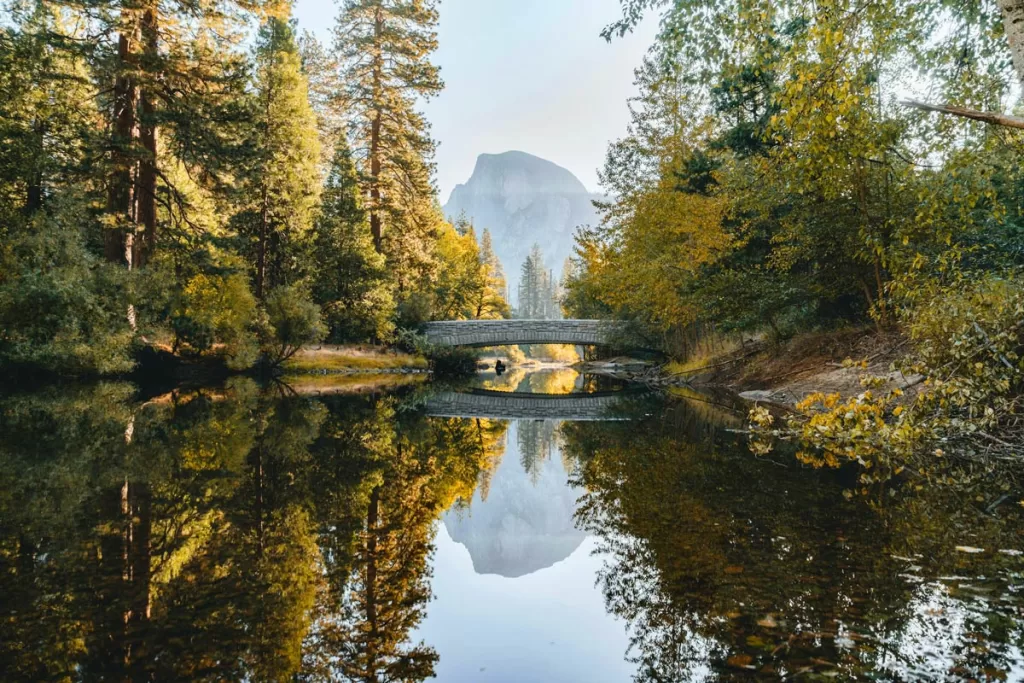
If you’re aiming to see all three national parks in one trip, we recommend 4 – 6 days in total. This will provide ample time to truly appreciate the incredible scenery and biodiversity of each park.
How to Get from Yosemite to Sequoia and Kings Canyon (and vice versa)
Plan to have a rental car when visiting the national parks. The parks are in remote areas, not well-serviced by public transportation. While technically you can catch a series of buses to get there, it’s honestly not worth the effort.
Driving time between Yosemite and Sequoia is just over 3 hours by car, compared to 9-10 hours by bus.
5 Days in Yosemite, Sequoia, and Kings Canyon
This itinerary goes north to south, for those coming from Northern California (San Francisco). If you’re coming from Southern California instead (L.A., San Diego), simply flip the order.
Day 1: Yosemite Valley
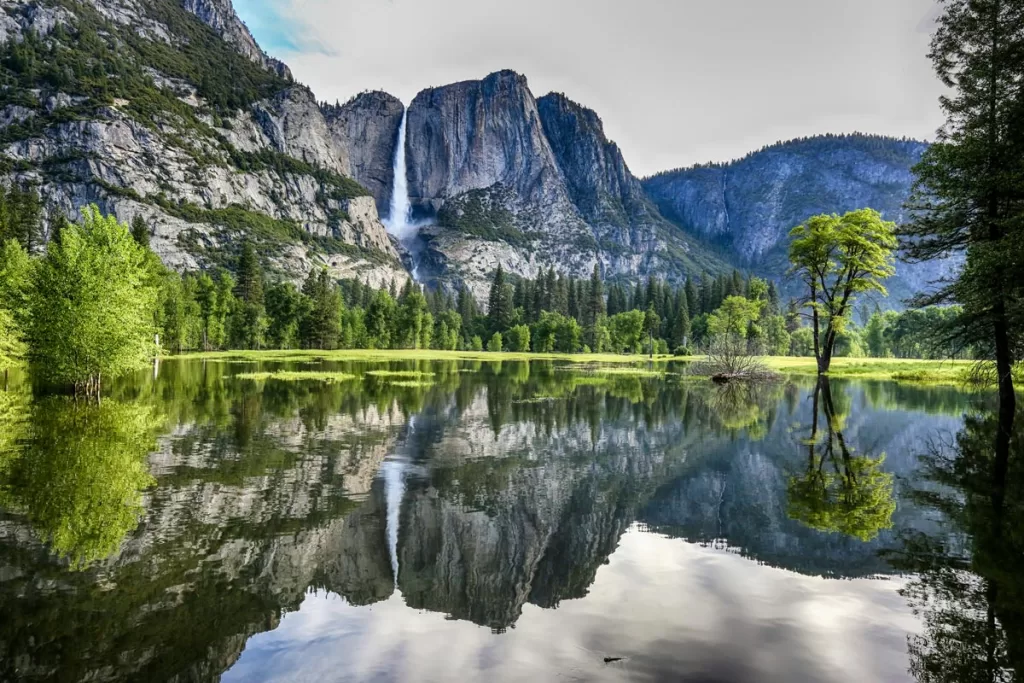
Note: the Mist Trail, along with parts of the John Muir Trail and Panorama Trail, is closed past Vernal Falls for trail work on Mondays and Thursdays through early December 2025. You can learn more here.
- Arrive early morning. Plan to be at the entrance by 9 a.m. (although earlier is better) and head to Yosemite Valley, the heart of the park.
- If you want to hike, go early while the day is still cool. The most famous hike in Yosemite Valley is the Mist Trail, which gets you up close to Vernal Falls (2.4 miles roundtrip) and Nevada Falls (keep going past Vernal, for 5.7 miles roundtrip). While the mileage doesn’t seem far, note that it’s uphill the whole way. If you prefer an easier hike without the elevation gain, Mirror Lake is another good option. The trail is a relaxed 4.4 miles roundtrip, to a serene little lake in the shadow of Half Dome.
- Explore Yosemite Valley. Take some time to stroll the paved paths that wind through the valley meadows. Here, you’ll also find Yosemite Falls, North America’s tallest waterfall. If you’re hungry, stop at Yosemite Village for lunch.
- Cool off in the Merced River and beat the afternoon heat. Head to either Sentinel Beach (directions) or Cathedral Beach (directions), where you can easily idle away on the sandy banks. Both beaches have parking lots for easy water access, and stellar views. Sentinel Beach looks out to Yosemite Falls, while Cathedral Beach sits in the shadow of El Capitan.
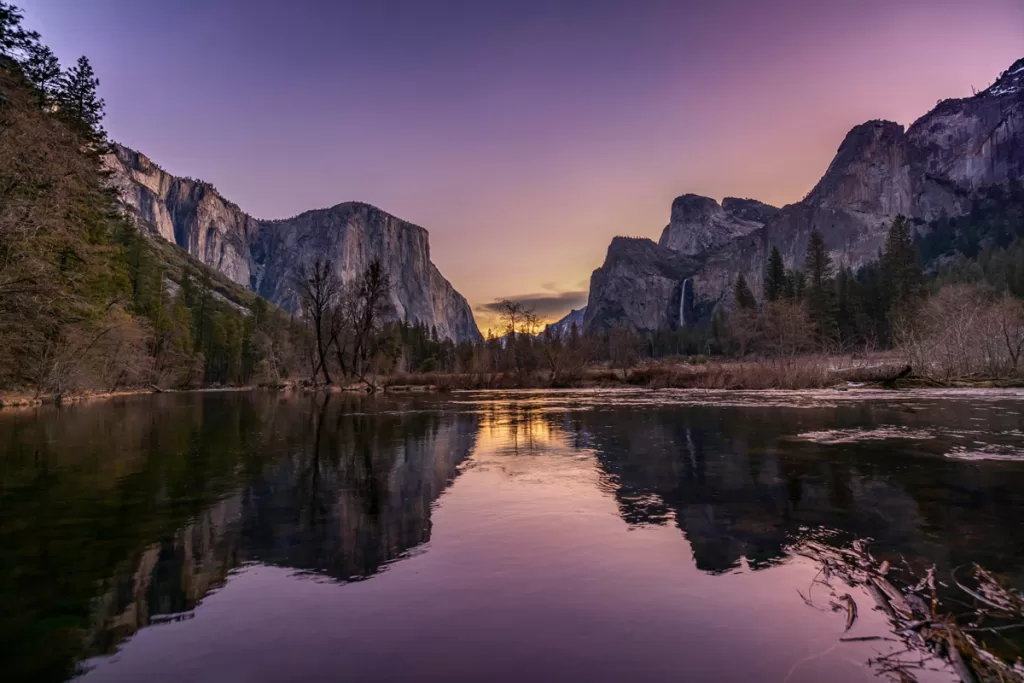
- Stop for a photo at Valley View. This tiny pull-out has one of the best vantage points of Yosemite Valley, framed by El Capitan on the left and Half Dome on the right. (Parking lot directions here).
- In late afternoon/early evening, bring a picnic to the meadow across the road from the famed El Capitan. (You can grab provisions at the store in Yosemite Village, if you didn’t bring your own). Park along Northside Drive at the base of El Cap (directions), and choose a comfy spot in El Capitan Meadow. As the sun starts to set, you’ll catch the rosy alpenglow stretch across the face of the granite monolith. If you look very closely, you might see rock climbers scattered across the face of this rock-climbing mecca. They look like tiny specs to the naked eye.
Day 2: Yosemite’s High Country
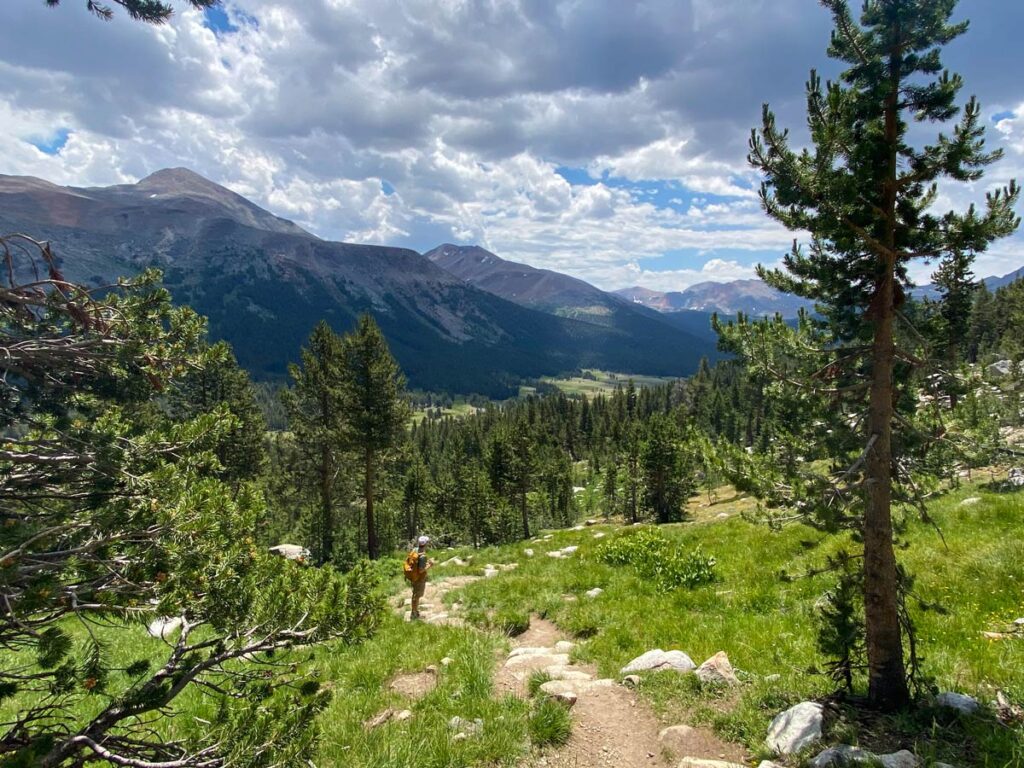
To fully appreciate the biodiversity of Yosemite, spend today in the High Sierra. It is completely different from temperate Yosemite Valley, with the higher elevation creating a more stark beauty of scraggly trees and windswept meadows.
- Explore Tuolumne Meadows, the most well-known destination of Yosemite’s high country. Directions.
- Those looking to hike can choose between Cathedral Lakes (the iconic hike in this region of Yosemite, 8.6 miles roundtrip) or Middle Gaylor Lake (a sharp, quick uphill for panoramic views above Tuolumne Meadow, 2.4 miles roundtrip)
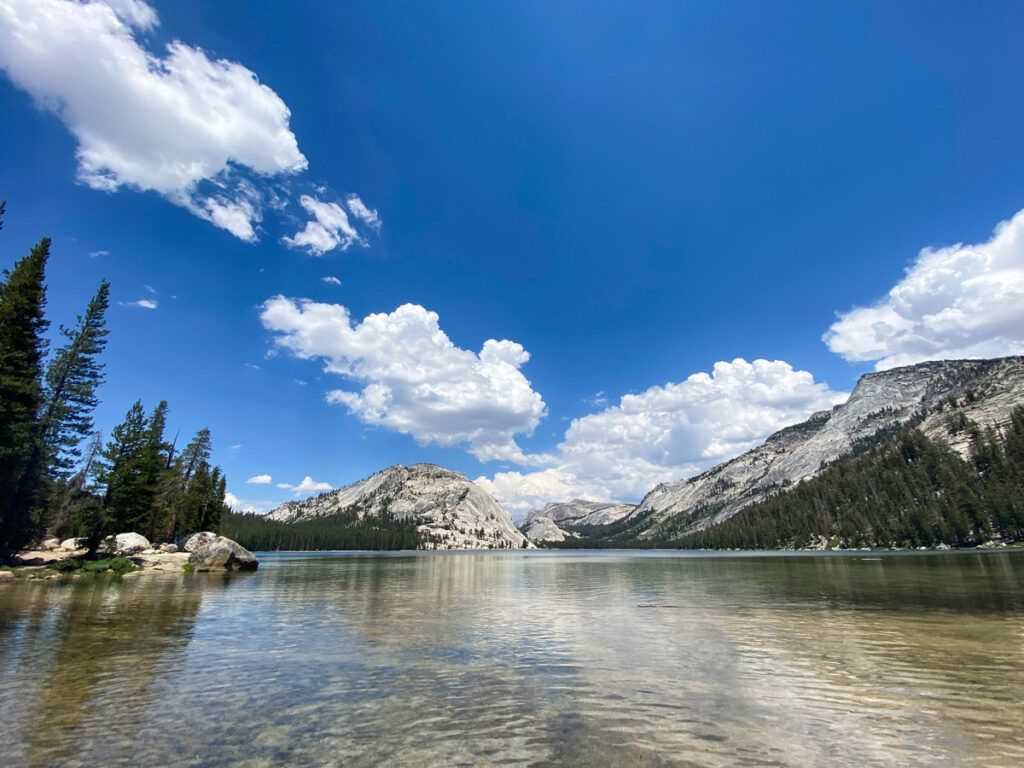
- Relax on the banks of Tenaya Lake. This pristine alpine lake has miles of shoreline to post up with a picnic lunch, and cool off with a swim or paddle in the warm months. Parking can be found at the Tenaya Lake Picnic Area (directions) or Murphy Creek Trailhead (directions).
- Stop off at Olmsted Point on your drive back, for a different perspective of Yosemite Valley. You’ll see Clouds Rest in the foreground, while Half Dome features prominently in the distance. Directions.
Day 3: See Yosemite’s Other Iconic Overlooks, Drive to Kings Canyon
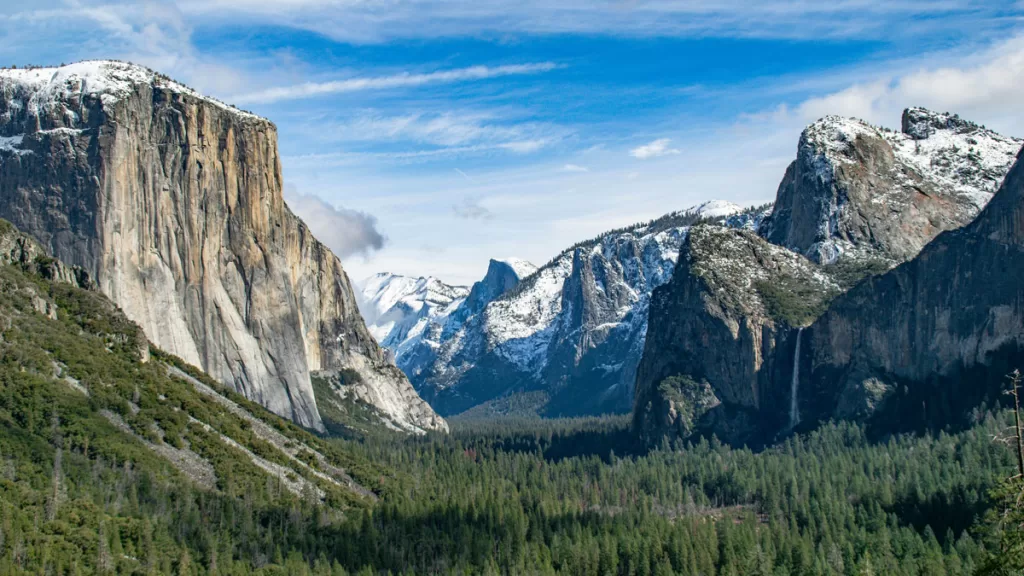
- Stop at Tunnel View for the famous view of Yosemite Valley (directions here). It’s a quick 5-minute stop, but if you’re looking for the perfect group photo for your trip, this is it.
- Visit Glacier Point for the best panorama of Half Dome and the High Sierra. Driving out-and-back to Glacier Point takes 45 minutes each way, but the vistas are worth it (directions).
- Take a hike. If you want to stretch your legs, you can either stroll the paved paths along the Glacier Point promontory, or stop to hike at one of the numerous trailheads along the drive. Taft Point is another great option: 2.3 miles roundtrip, to dizzying views of Yosemite Valley 3,000 feet below (directions here).
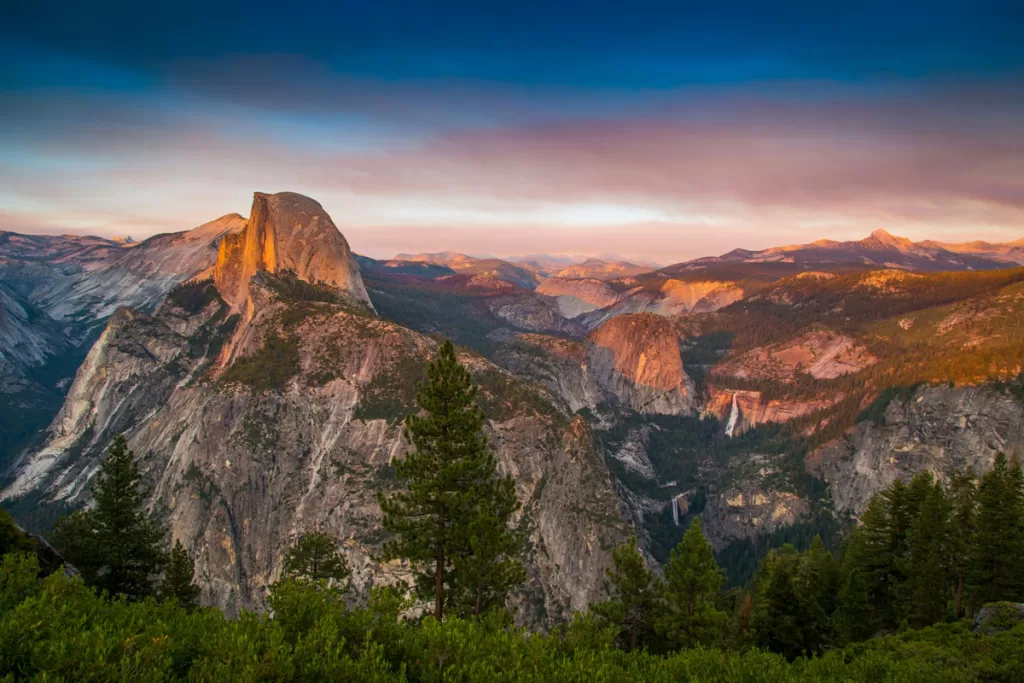
- Drive to Kings Canyon. The 3-hour, 15 minute drive will take you out of Yosemite’s southern entrance, passing landmarks like the historic Wawona Hotel on the way. Some people stop at the Mariposa Grove of Giant Sequoias, but don’t feel obligated if you’re pressed for time; you’ll be seeing plenty of tall trees soon enough.
- Stroll through Grant Grove and see General Grant once you arrive in Kings Canyon. General Grant is the second largest sequoia tree in the world, standing nearly 290 feet tall and 29 feet wide. The General resides in Grant Grove, an easy 0.3-mile loop along the forest floor. Along the way, you’ll pass other giant sequoias and Gamlin Cabin, built by two brothers who lived here in the 1870s. Directions.
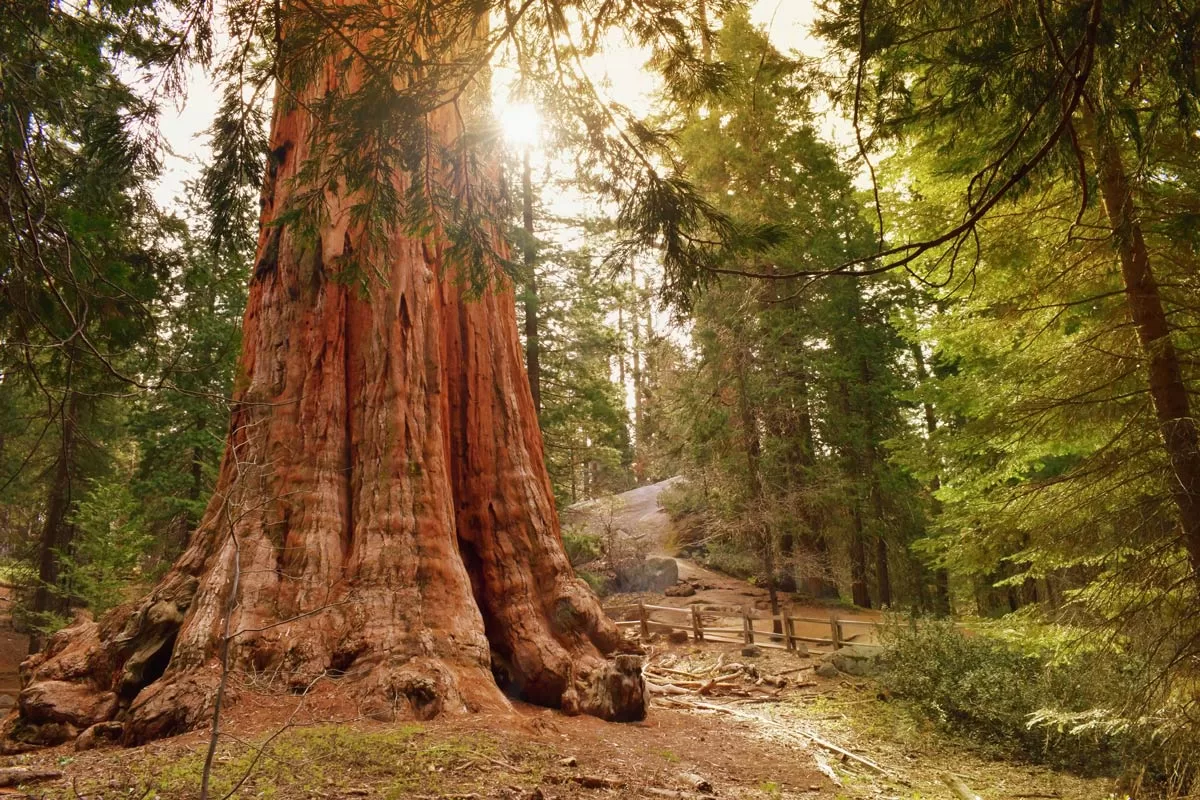
- Stop at Big Stump Grove, just south of Grant Grove. While it’s not a major tourist landmark, it makes another fun photo op if you have the time. Directions.
Day 4: Sequoia National Park
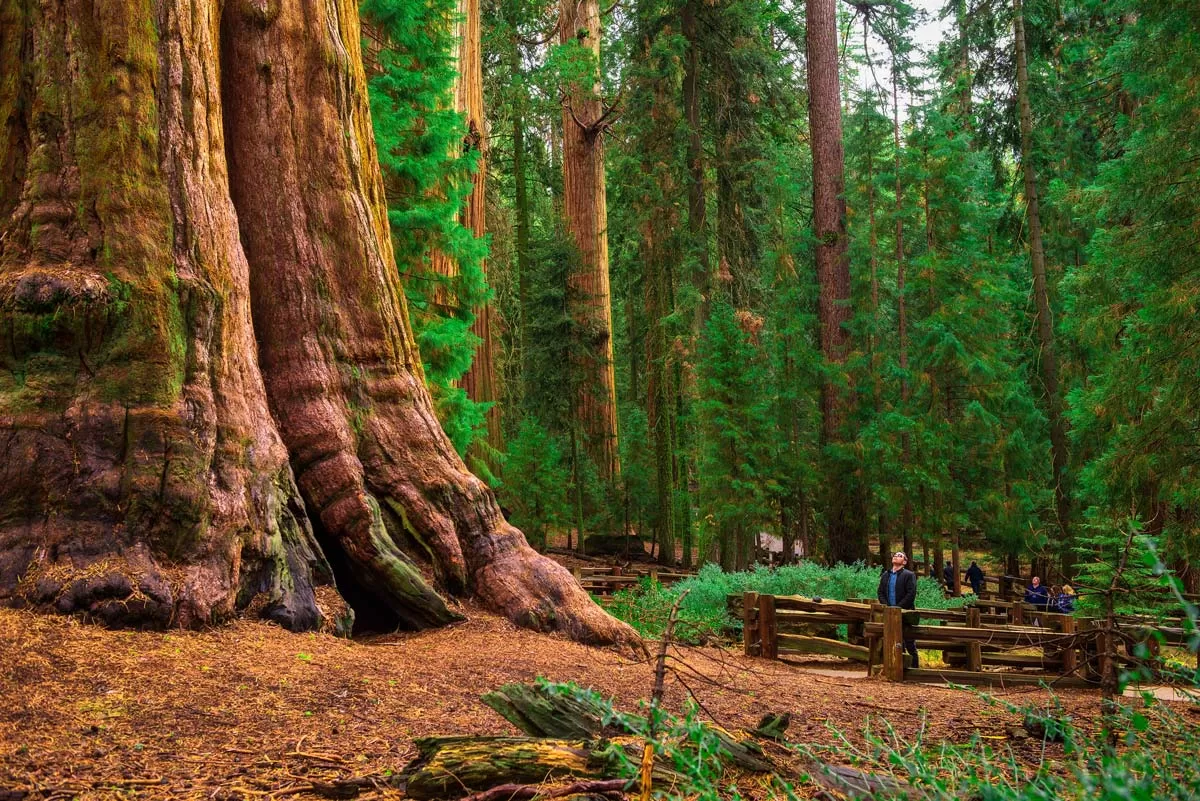
- Arrive early and see General Sherman before the crowds. Enjoy the solitude of early morning in the Giant Forest, with many miles of hiking trails looping under the canopy. You can walk as long or as little as you like: trail options range from 0.25 – 10 miles. Just be sure to visit General Sherman, towards the start of the trailhead. It’s the world’s largest tree by volume. Parking lot directions here.
- Drive through the famous Tunnel Log. Cheesy, yes, but snapping a photo of your car driving through the tree is also a popular “must-do” for many tourists. Plan to wait in line during the summer months (we’ve witnessed a 30-minute line of cars during peak July travel). Directions.
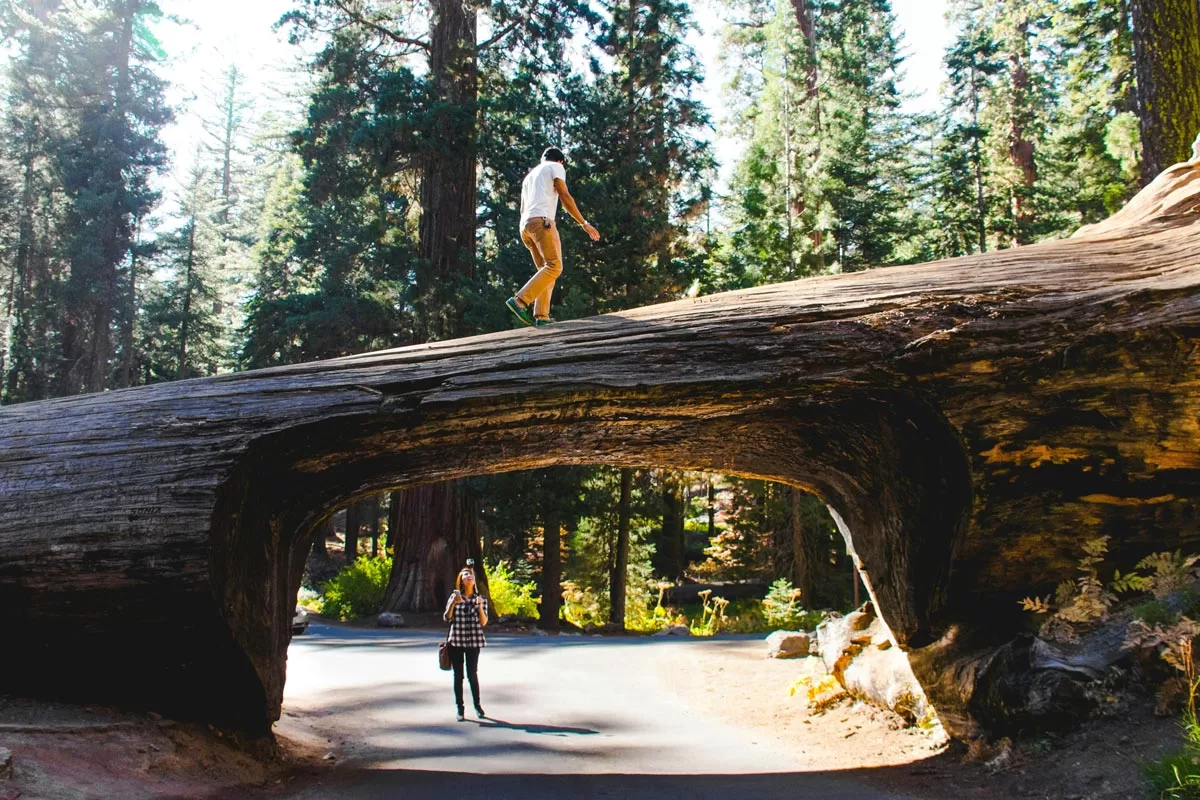
- Admire the biodiversity of the Sierra with stops at Crescent Meadow and Moro Rock. With parking lots adjacent to each other, it’s easy to cross off both popular landmarks in quick order. The verdant Crescent Meadow comes alive with lush grasses and wildflowers in the spring and summer, while the quick 0.25-mile hike up to Moro Rock rewards with a panoramic view of the valley below. (Directions to both Crescent Meadow parking lot and Moro Rock parking lot.)
Day 5: Get a Taste of the Sierra Backcountry
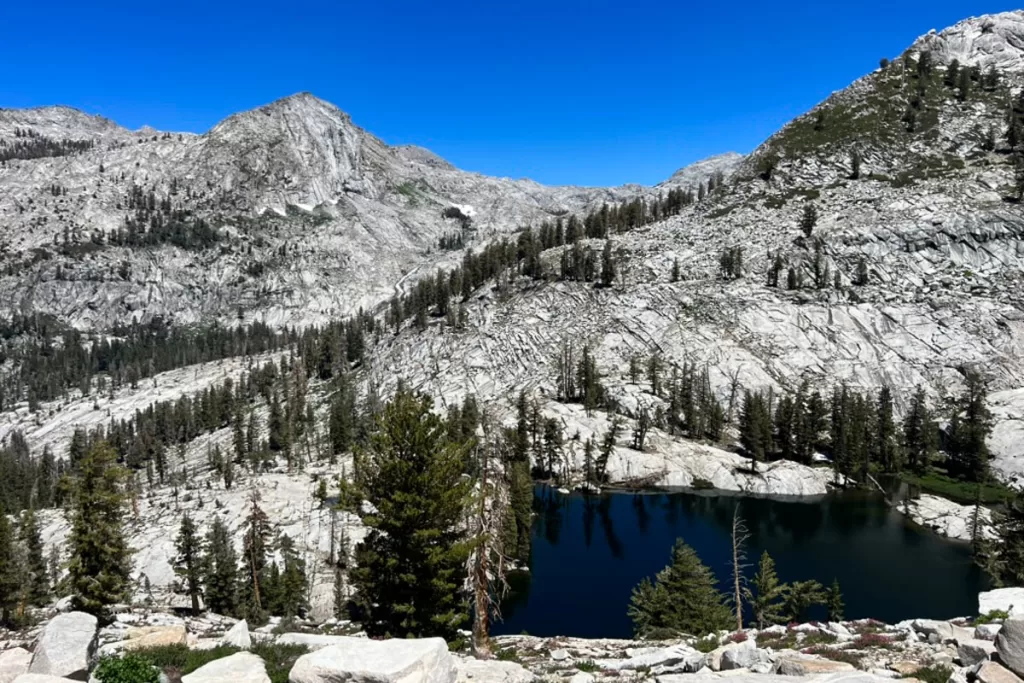
With an extra day to explore Sequoia at your leisure, we recommend a longer hike for a different perspective of the park.
The High Sierra, an all-encompassing term for the higher elevations of the Sierra Nevada mountains, is renowned for its raw landscapes and jaw-dropping vistas. It often requires a multi-day backpacking trip to reach the true High Sierra, but Sequoia’s unique proximity lets you experience the stark, windswept beauty on a day hike.
- Hike the Watchtower Trail. It’s 8.3 miles roundtrip, but this trek is one of the best “deals” in Sierra Nevada hiking. Usually, views this epic require two days of hiking into the backcountry to see. Thus, with short mileage and very manageable elevation gain, we consider the Watchtower “backcountry on a budget.” (Directions to the trailhead parking lot here).
- If you’re feeling good, press on another few miles past the Watchtower overlook to a string of crystal alpine lakes. The Lakes Trail includes Heather Lake (approximately 0.5 mile past the Watchtower), Emerald Lake (1 mile past Heather), or Pear Lake (1 mile past Emerald). You won’t regret lounging on the banks and soaking your weary feet before hitting the trail back to your car. While sources differ on the total mileage, plan on nearly 13 miles roundtrip if you go all the way to Pear Lake and back.
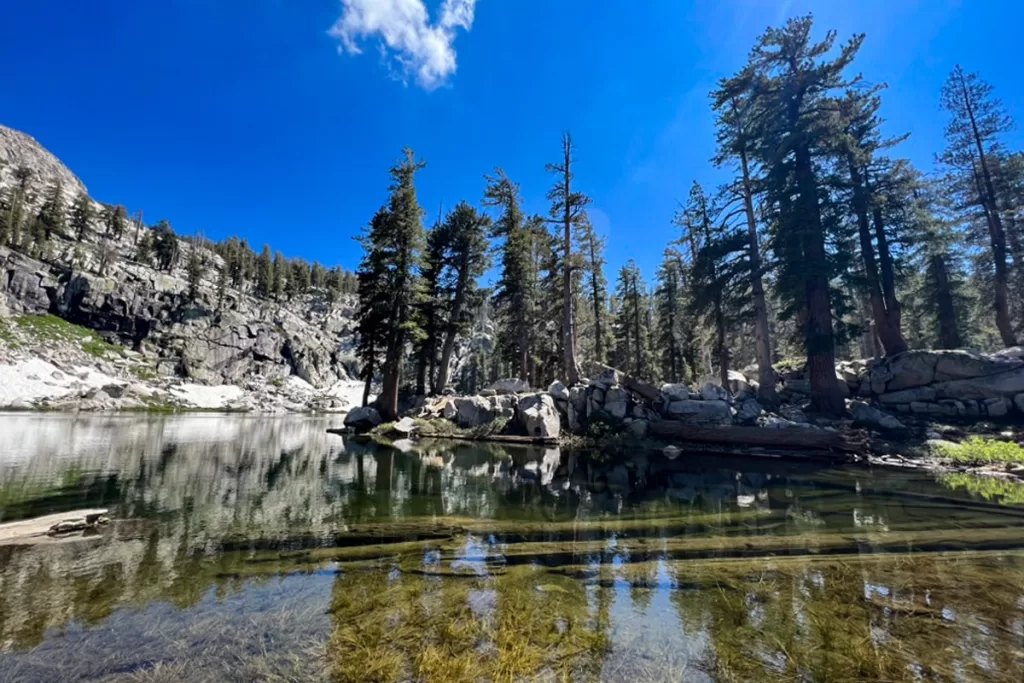
Have 6 or more days to spend in Yosemite, Sequoia, and Kings Canyon? Check out our 7-day itinerary, to choose activities to fill your extra time in the parks!
